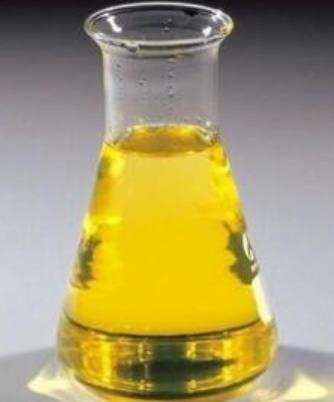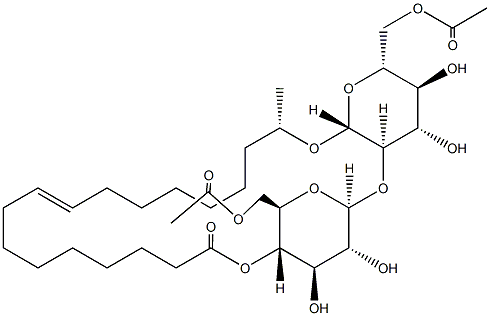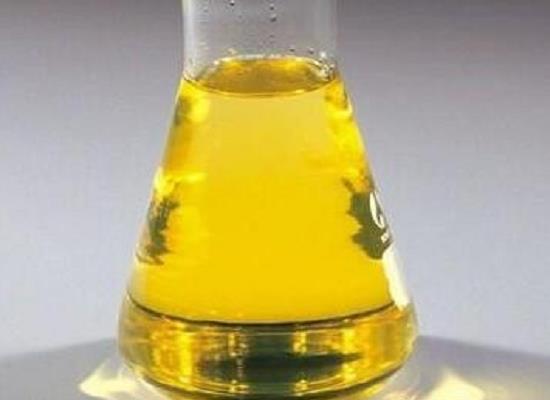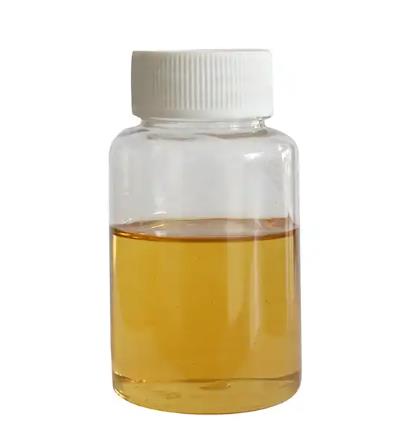Lactonic Sophorolipid:Mechanisms, Application, Chemical And Toxicity Studies
General Description
Lactonic sophorolipids are made up of a sophorose moiety attached to a long chain of hydroxyl fatty acids in which its carboxyl groups of fatty acids are esterified internally at the 4-position of sophorose and 6’-or 6”-position in some rare cases, forming a closed ring structure. Lactonic sophorolipids have lower water solubility than acidic sophorolipids due to the addition of acetyl groups into the compounds.[1]Lactonic sophorolipids, as a potential anticancer drug, has attracted wide attention of pharmaceutical researchers,which is of greater biological activities such as anti-bacterium, virus elimination, and inflammatory response elimination, has been firstly used to intervene in vitro to investigate its effect on HepG2 cell proliferation.Lactonic sophorolipid can inhibit the proliferation of cells, and it is possible to induce apoptosis in HepG2 cells through the Caspase-3 pathway. The mechanism of Lactonic sophorolipid action on HepG2 cell proliferation was firstly also discussed, which provides a certain experimental reference for the clinical treatment of liver cancer as well as Lactonic sophorolipid can promote apoptosis of cervical cancer cells.The esophageal cancer cell lines were inhibited by Lactonic sophorolipid in a dose- and time-dependent manner. Similar studies were found in the incidence of colorectal cancer.[3]

Figure 1 Solution of Lactonic sophorolipid
Preparation
The production process to obtain diacetylated lactonic sophorolipids(Lactonic sophorolipids) was performed at the 150 l scale as described by some researchers using the S. bombicola lactone esterase overexpression strain (oe sble). The medium described by Lang et al. (2000) was used for the seed strains containing in g l-1:132 glucose, 4 yeast extract (YE), 5 Na-citrate.2H2O, 1.5NH4Cl, 1.0 KH2PO4,0.16 K2HPO4,0.7 MgSO4,0.5 NaCl, 0.27 CaCl2.2H2O. The first seed cultures (50 ml, 30 h, 30℃, 200 rev min-1) were inoculated from cryovials and transferred to 500 ml of the same medium (48 h, 30℃, 200 rev min-1). These were inoculated (3%) in the main reactor (150 l, Sartorius DCU-3) containing 60 l of the production medium, based on corn steep liquor (CSL) instead of YE (100 g l-1 glucose.H2O, 5 g l-1 dried CSL, 1 g l-1 K2HPO4,4 g l-1(NH4)2SO4,0.5gl-1, MgSO4.7H2O). Twelve g l-1 of rapeseed oil was added at the start. Aeration and stirring were set to 20 l min-1 and 500 rev min-1 respectively. After 20 h of batch fermentation, the continuous addition of rapeseed oil was started (0.8gl-1h-1). The continuous glucose feed was started when its concentration dropped below 30 g l-1 and adjusted to keep the concentration in the reactor between 30 and 50 g l-1. Temperature was maintained constant at 25℃, pH at 3.5 by automatic NaOH addition after a spontaneous drop during growth. The dissolved oxygen concentration was kept above 30%. Fermentation was stopped after 260 h.[2]
The purification of diacetylated Lactonic sophorolipids was based on melting the lactonic sophorolipid and crystallization in (cold) water, which has been described in literature for the wild type for an lactonic sophorolipid product enriched in lactonic lactonic sophorolipid. Sedimentation inside the reactor was achieved by heating to 70℃with sedimentation overnight (12 h). The bottom ‘oily’ phase consisting of the melted lactonic SLs was filtered at 70℃ and filter aid (dicalite speedplus) was applied to facilitate filtration. The SL ‘oil’ was subsequently washed with reverse osmosis water (3×) and sedimented again. Finally, a sub-batch of 2 l of this product was crystallized (4℃, 200 rev min-1) and the resulting ‘slurry’ (65% DM) was freeze-dried after determining some conditions important for freeze-drying, that is, the eutectic point (-30℃), the max drying point (25℃) and the minimum pressure (0.07mbar).[2]
Biological activity
Lactonic sophorolipid(Lactonic sophorolipid) is a natural antimicrobial surfactant for oral hygiene.[2]Lactonic sophorolipid, a potential anticancer agent, can inhibit the proliferation of cells, and it is possible to induce apoptosis in cells. The HepG2 cells with Lactonic sophorolipid co-culture exhibited typical apoptotic morphology, and the expression levels ofenzyme activity of Caspase-3 and Caspase-9 increased (P<0.05). The researchers also found that Lactonic sophorolipid increases cell apoptosis rate and regulates the expression of genes and proteins associated with apoptosis through the Caspase-3 pathway. These results indicate that Lactonic sophorolipid may be one of the potential drug candidates to inhibit the proliferation and induce apoptosis in hemanHepG2 cells.[3,4]
Mechanisms
The mechanisms for anti-tumor activity of lactonic sophorolipid is the HDAC inhibition, where histone deacetylases are inhibited interfering with gene expression.Lactonic sophorolipid can inhibit proliferation and promote apoptosis of cervical cancer cells.[3]
Application
One side, several studies indicate that Lactonic sophorolipid show greater potentials as anti-tumor, anti-microbial, anti- fungal and spermicide agents,while ASL are more suited as moisturizing, solubilizing, cleaning and emulsifying agents.[3]What’s more,the natural lactonic sophorolipids can be used to glycolipid polymer by ring-opening metathesis polymerization.Lactonic sophorolipid, derived from fermentation of Candida bombicola, was polymerized by ROMP catalysis. Poly(sophorolipid) was prepared in yield and Mn up to 89% and 103 000, respectively.[5]Lactonic Sophorolipid is able to increases surface wettability of poly-l-lactic acid electrospun fibers based on some researches.[6]
Toxicity
The cytotoxic effect of Lactonic sophorolipid is significantly higher than that promoted by acidic lactonic sophorolipid. The HepG2 cells were exposed to a series ofLactonic sophorolipid concentrations at different time point intervals; MTT assay results showed that the cells were inhibited by lactonic sophorolipid in a dose- and time-dependent manner. The half-maximal inhibitory concentration of Lactonic sophorolipid with damaged cells at 24 h was 24.24 ± 3.75 μg/mL (IC50 =25μg/mL), and this was a significantly different change compared to the control group (P<0.01). Therefore, 24h treatment with 25 μg/mL Lactonic sophorolipid was used to induce injury to HepG2 cells in the subsequent experiments.[3]
Reference
[1]Wei, YC, Jeck FN, et al. Sophorolipids—Bio-based antimicrobial formulating agents for applications in food and health[J].Molecules. 2022,27(17), 5556.
[2]M Elshikh, et al. Rhamnolipids and lactonic sophorolipids: natural antimicrobial surfactants for oral hygiene[J].Appl Microbiol. 2017,11.123(5):1111-1123.
[3]Xiao W, et al. Lactonic sophorolipid-induced apoptosis in human HepG2 cells through the Caspase-3 pathway[J].Appl Microbiol Biotechnol.2021,105(5):2033-2042.
[4]Callaghan B, Lydon H, Roelants SLKW, et al. Lactonic Sophorolipids increase tumor burden in Apcmin+/-mice[J]. PloS one, 2016, 11(6): e0156845.
[5]Gao W, Hagver R, et al. Glycolipid polymer synthesized from natural lactonic sophorolipids by ring-opening metathesis polymerization[J]. Macromolecules, 2007, 40(2): 145-147.
[6]Ziemba AM, Lane KP, BalouchB, et al. Lactonic sophorolipid increases surface wettability of poly-L-lactic acid electrospun fibers[J]. ACS Applied Bio Materials, 2019, 2(8): 3153-3158.
);You may like
Related articles And Qustion
See also
Lastest Price from Lactonic Sophorolipid manufacturers

US $0.00-0.00/kg2024-06-15
- CAS:
- 148409-20-5
- Min. Order:
- 1kg
- Purity:
- 99%
- Supply Ability:
- 1ton

US $0.00-0.00/kg2024-06-11
- CAS:
- 148409-20-5
- Min. Order:
- 1kg
- Purity:
- 0.99,0.50
- Supply Ability:
- 500000



